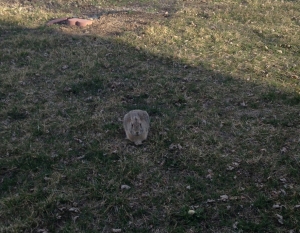**Wildlife Pests Require a Wildlife Professional & are NOT Considered Pest Control – We are providing this information as a service to our customers and would be happy to refer you to a wildlife control company to further assist you. **
Nature watchers often enjoy cottontails inhabiting their yard as they hop from place to place or stretch out to warm themselves in the sun. Gardeners on the other hand commonly cringe at the thought of a cottontail invasion. Rabbits are capable of destroying trees, shrubs, flower and vegetable gardens. Planting rabbit resistant plants including daffodils, Oriental poppy and yucca in ornamental gardens can decrease the likelihood of rabbit damage. Local nurseries and state extension offices can often provide a complete list of recommended plants.
Repellents are also available over-the-counter for rabbit deterrent. Always follow label instructions and warnings regarding treatment, especially in areas where gardens containing fruits or vegetables for human consumption are present. Rabbits can at times reach heights of upwards of 3 feet when feeding and therefore that is the typical recommended upper height limit for repellents to be applied. Repellents usually need to be reapplied after rain, snow, irrigation or other significant sources of moisture.
An alternative method is to exclude rabbits from gardens, trees and shrubs. Fencing can be installed with a minimum of six inches buried below ground for the prevention of digging. Fencing should be of fine mesh in order to prevent rabbits from squeezing through fencing openings. Fencing material will need to be chew resistant as well. Trees and shrubs can often be protected by similar fencing or by installing sturdy piping around the trunk from the ground to a height of up to 3 feet. Exclusion methods can be expensive; however they tend to be a more permanent resolution.
When rabbit numbers increase significantly it is typically due to a decrease in predators in the area. Predators include domestic dogs and cats, coyotes, foxes and birds of prey. Trapping regulations as well as lethal control methods vary based on location, therefore homeowners should check with local and state guidelines prior to utilizing these methods.
